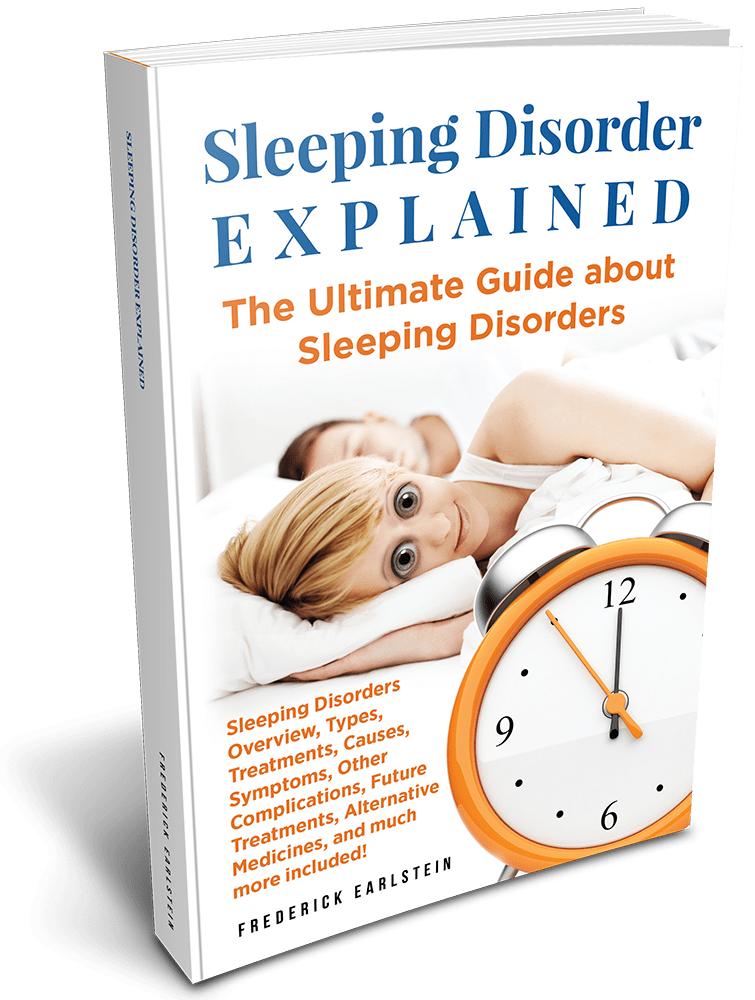TABLE OF CONTENTS
- Introduction 1
- Development of the Field of Sleep 2
- Non – Rapid Eye Movement 4
- Stage 1 Non – Rapid Eye Movement 4
- Stage 2 Non – Rapid Eye Movement 5
- Stage 3 and Stage 4 Non – Rapid Eye Movement 5
- Rapid Eye Movement (REM) 5
- Chapter One: What is Insomnia? 7
- Classifications of Insomnia 8
- Classification of Chronic Insomnia 9
- Psychological Insomnia 10
- Idiopathic Insomnia 10
- Paradoxical Insomnia 11
- Sleep Hygiene 12
- Causes of Insomnia 13
- Insomnia Caused by Mental Disorder/s 14
- Insomnia Caused by Medical Condition 14
- Insomnia Caused by Drugs, Medications, and Other Substances 15
- Other Causes of Insomnia 16
- Limit – Setting Disorder 16
- Short – Term Insomnia Disorder 17
- Treating Insomnia 18
- Chapter Two: Sleep – Related Breathing Disorders 21
- Obstructive Sleep Apnea (in Adults) 22
- Obstructive Sleep Apnea (in Children) 23
- Central Sleep Apnea Syndromes 24
- Central Sleep Apnea with Cheyne – Stokes Breathing 24
- Central Sleep Apnea Caused by High – Altitude Periodic Breathing 25
- Central Sleep Apnea Caused by Medication Intake 26
- Primary Central Sleep Apnea (in Infants) 26
- Primary Central Sleep Apnea in Premature Infants 26
- Treatment Emergent Central Sleep Apnea 27
- Sleep – Related Hypoventilation Disorders 27
- Obesity Hypoventilation Syndrome 27
- Congenital Central Alveolar Hypoventilation Syndrome 28
- Late – Onset Central Hypoventilation with Hypothalamic Dysfunction 28
- Idiopathic Central Alveolar Hypoventilation 29
- Sleep – Related Hypoventilation Caused by Substance or Medications 29
- Sleep – Related Hypoventilation Caused by Medical Disorder 29
- Isolated Symptoms 30
- Snoring 30
- Catathrenia 31
- Chapter Three: Central Disorders of Hypersomnolence & Circadian Rhythm Sleep – Wake Disorders 33
- Central Disorders of Hypersomnolence 34
- Narcolepsy Type I 34
- Causes of Narcolepsy 38
- Diagnosing Narcolepsy 39
- Treating Narcolepsy 40
- Narcolepsy Type II 41
- Idiopathic Hypersomnia 42
- Kleine – Levin Syndrome 42
- Causes of Hypersomnia 43
- Hypersomnia Caused by Medical Disorders 43
- Hypersomnia Caused by Substances or Medicine in – Take 43
- Hypersomnia with Psychiatric Disorder 43
- Insufficient Sleep Syndrome 44
- Circadian Rhythm Sleep – Wake Disorders 45
- Delayed Sleep – Wake Phase Disorder 45
- Advanced Sleep – Wake Phase Disorder 46
- Irregular Sleep – Wake Rhythm Disorder 46
- Non – 24 Hour Sleep – Wake Rhythm Sleep Disorder 47
- Shift Work Disorder 47
- Jet Lag Disorder 48
- Circadian Rhythm Sleep Disorder Not Otherwise Specified 48
- Chapter Four: Parasomnias 51
- Disorders of Arousal from Non – Rapid Eye Movement Sleep 52
- Confusional Arousals 52
- Sleep Walking 53
- Sleep Terrors 54
- Sleep – Related Eating Disorder 54
- Recurrent Isolated Sleep Paralysis 55
- Nightmare Disorder 55
- Other Types of Parasomnias 56
- Exploding Head Syndrome 56
- Sleep – Related Hallucinations 57
- Sleep Enuresis 58
- Causes of Parasomnias 58
- Parasomnias Caused by Medical Disorder 58
- Parasomnias Caused by Medication in – take or Other Substances 59
- Sleep Talking 59
- Chapter Five: Sleep – Related Movement Disorders 61
- Restless Legs Syndrome 62
- Periodic Limb Movement Disorder 64
- Sleep – Related Leg Cramps 65
- Sleep – Related Bruxism 65
- Sleep – Related Rhythmic Movement Disorder 66
- Benign Sleep Myoclonus of Infancy 67
- Propriospinal Myoclonus at Sleep Onset 68
- Causes of Sleep – Related Movement Disorder 68
- Sleep – Related Movement Disorder Caused by a Medical Disorder 68
- Sleep – Related Movement Disorder Caused by a Medication in – Take or Substance 69
- Isolated Symptoms of Sleep – Related Movement Disorder 69
- Excessive Fragmentary Myoclonus 69
- Hypnagogic Foot Tremor (HFT) and Alternating Muscle Activation (ALMA) 70
- Hypnic Jerks or Sleep Starts 70
- Other Type of Sleeping Disorders 71
- Environmental Sleep Disorder 71
- Chapter Six: Alternative Medicine and Herbal Remedies 73
- Conventional Treatments vs. Unconventional Treatments 74
- Psychological Treatment 74
- Pharmacological Treatment 75
- Limitation in Drug Therapies 76
- Alternative Therapies 77
- Herbal Remedies for Sleep Disorders 78
- Medicinal Herbs as Remedies 80
- Ginseng 82
- Kava Kava (Piper methysticum) 83
- Passion flower (Passiflora incarnata) 84
- Hops (Humulus lupulus) 85
- Physiological Alternative Treatments 86
- Melatonin 86
- L – Tryptophan and 5 – Hydroxytryptophan 87
- Other Alternative Approach 88
- Acupuncture 88
- Low Energy Emission Therapy (LEET) 89
- FAQs in taking Herbal Medicines to Treat Sleeping Disorders 90
- Conclusion 97
- Chapter Seven: The Future of Sleep Disorder Treatments 99
- The Future of Conducting Sleep Disorder Treatments 100
- At – Home Sleep Testing Devices 100
- Phone Apps and Wearable Technology 102
- Telehealth 103
- Further Research about Sleeping Disorders 103
- Chapter Summary 105
- Photo Credits 121
- References 123

